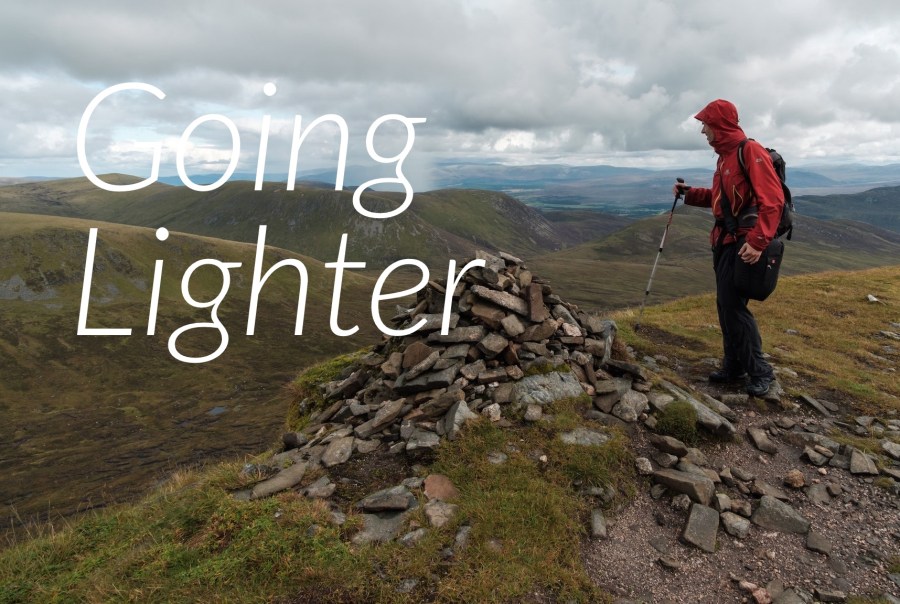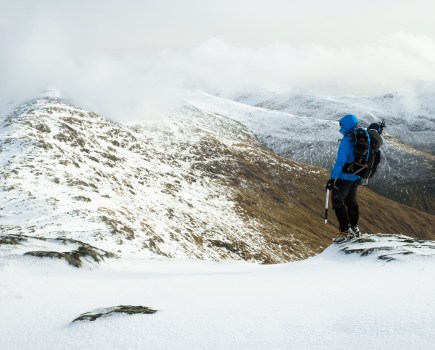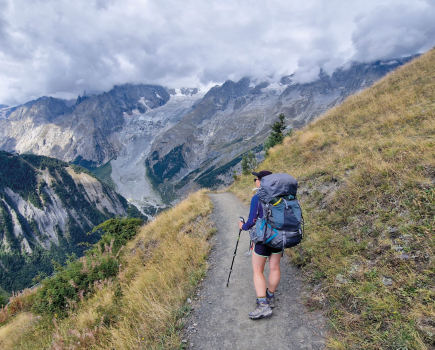How can you reduce pack weight while also ensuring you have the right clothing for your objective? We take a look at clothing systems for lightweight backpacking
By Alex Roddie, Online Editor
Going Lighter Series
The first feature in our online-exclusive series on reducing pack weight offered six tips to help you make the first cut, from carrying less water to trying out trail shoes. This week it’s time to take a deeper dive into one aspect of lightweight backpacking: clothing.
Getting clothing right for the expected conditions while also keeping your pack manageable is a constant learning curve. There is no perfect set of kit that will work in every scenario; mountain clothing is always a compromise. The good news is that, if you’d like your pack to be lighter, there are almost certainly improvements you can make without breaking the bank.
The key question to ask yourself is this: what do you want to achieve? Everyone has a different threshold between safety, comfort, weight, durability, and cost. More experienced backpackers will have a much better idea of where this balance lies for them, which is why – as we explained in our first feature of this series – getting more experience is one of the most vital lightweight backpacking techniques of all.
Important note
This feature assumes you already have some experience of backpacking. At a minimum, you must always pack sufficient warm, windproof and waterproof clothing, a shelter and sleeping system adequate for your objective, adequate footwear, enough food and water, and map and compass – along with the skills to safely use them.
The goals of outdoor clothing
When it comes to backpacking, just what is clothing for? It might seem obvious, but before we talk about weight it’s important to remember the fundamentals:
- The clothing you take on the trail is for safety first, comfort second.
- Saving weight must always come after safety, and for most people it’ll come after comfort too, although this depends on the individual!
Clothing ensures your safety and comfort in several ways:
- By keeping you dry. In the UK, we must almost always carry waterproof clothing (although as I write this we’re in the middle of a heatwave and I haven’t worn a waterproof in weeks…)
- By keeping you warm. It gets cold on mountains, especially at night, and we must always carry clothing that will keep us warm enough for the expected conditions. This varies from person to person, from season to season, and even from day to day.
- By keeping you cool. This isn’t just a summer thing – overheating can be a problem in winter too. Mountain clothing must therefore be highly versatile.
If we take care to satisfy the fundamentals, it’s almost always possible to optimise the clothing we carry for weight – and sometimes even improve safety and comfort in the process.
The most important thing is to avoid going ‘stupid light’, a phrase popularised by long-distance hiker Andrew Skurka. It’s easy to get carried away when trimming pack weight and end up leaving something at home that you need for your safety or comfort. While reducing comfort will only spoil your enjoyment of the trail, reducing safety could have dire consequences, so do remember to keep your weight savings in proportion. Don’t ignore the basics.
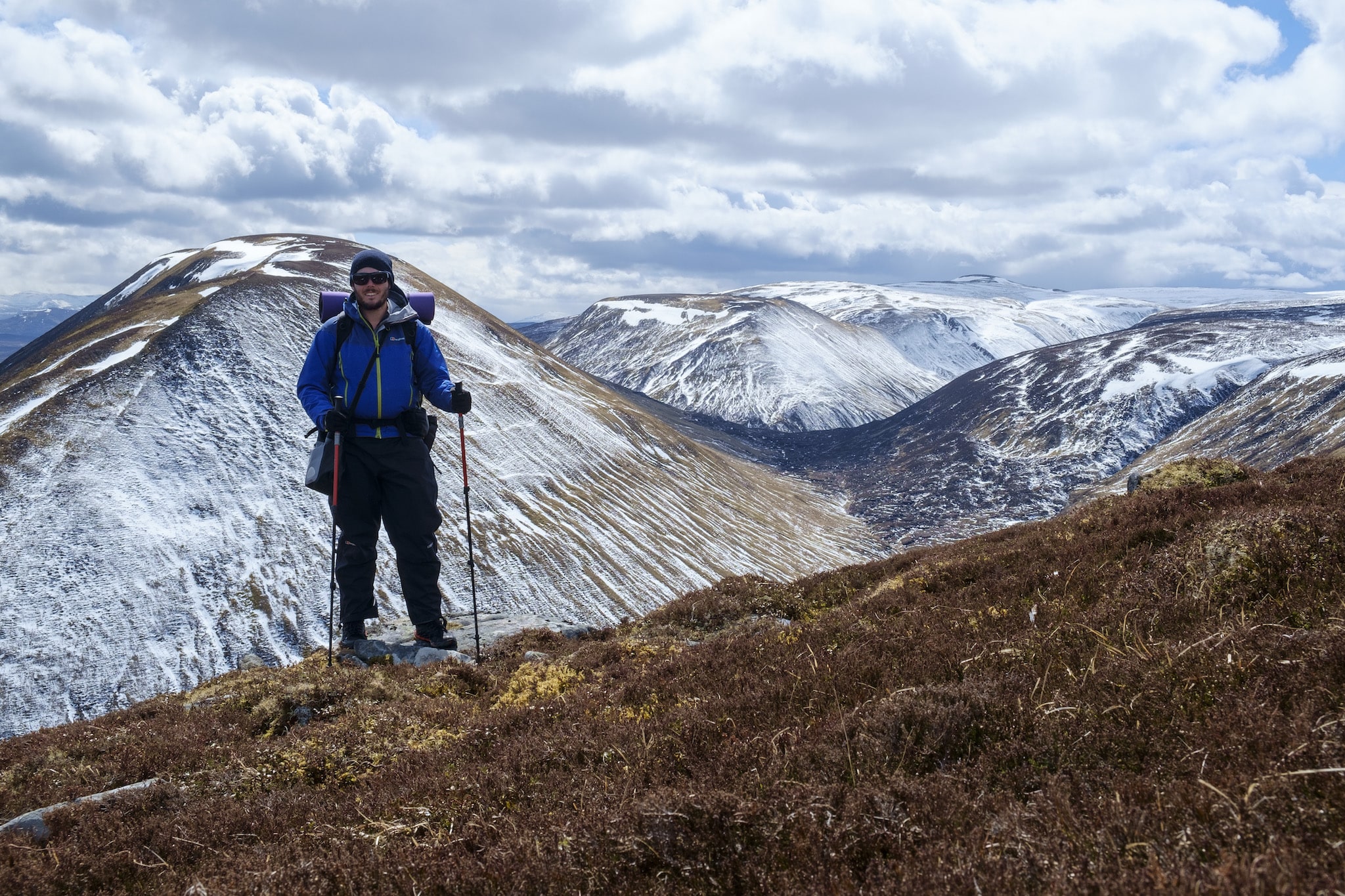
A waterproof jacket is almost always necessary
Abandon your preconceptions
We all have preconceptions when it comes to backpacking gear, and perhaps especially clothing.
I started out as a Scout in the 1990s. Our kit was cheap, heavy, and bombproof. When we went backpacking, we carried the full complement of garments: waterproofs, multiple fleeces (regardless of season), a complete change of clothes per day, more socks than you could shake a stick at. Of course, I was an inexperienced child, and more gear can compensate for lack of experience by reducing the margin for error. But it also made for a monstrous pack and my abiding memories of those trips involve aches, pains, and blisters.
As a youngster I formed the view that, on the trail, more clothing = better. It took me many years to shake this attitude. As recently as 6 or 7 years ago I was still carrying far more clothing than I needed for safety or comfort. Abandoning my preconceptions was a difficult process but the benefits have proven enormous.
I’d like to stress again that, if you’re happy with what you carry, there’s no problem – nobody but yourself can tell you you’re carrying too much.
Knowledge is key
When it comes to optimising your mountain clothing, knowledge is absolutely critical. You must combine your experience with research to find the best options for you – and research covers not only the kit (hint: TGO gear reviews are great for this) but your planned future trips. If you want to head to Arctic Norway for the first time, it’s unwise to assume that your Scottish summer setup will be perfectly tuned to that environment. There may be considerable overlap – and it may even be good enough – but the important thing is to arm yourself with knowledge first.
Knowledge will also help you set an appropriate margin for error. To use the Arctic Norway example, summer conditions can include ferocious snowstorms and sub-zero temperatures – conditions you’re unlikely to encounter in a British summer. The more you know, the more able you’ll be to gauge possible risks and the likelihood of them affecting you.
The trade-offs
The cost conundrum
Cost is one of the obstacles many backpackers face when trying to lighten up their kit. Why replace perfect good albeit slightly heavier items you already own? Only you can answer this – remember the question of what do you want to achieve – but reducing the weight of your mountain clothing doesn’t have to cost a fortune.
While it’s true that lightweight gear can be expensive, this isn’t always the case. For example, a microfleece top is a staple lightweight item, versatile in many different climates, yet can be found for very little – and there’s often no need to splash out on a more expensive brand. The same goes for things like base layers and running shorts.
Don’t forget that purchasing a few carefully selected, versatile items can end up costing you less than a greater number of garments that perform in a narrower range of conditions. This is one reason why versatility is key to lightweight clothing for backpacking.
Durability
Sometimes, but not always, lightweight clothing can be less durable than heavier kit. That sub-200g waterproof shell won’t stand up to being scraped over rocks while scrambling as well as the 800g Gore-Tex jacket you’ve owned for 15 years. This also ties in with cost – only you can decide whether you’re happy replacing items more frequently.
That being said, modern lightweight fabrics are often a lot more durable than you might think, and I’ve never managed to wear out a lightweight waterproof or windproof yet (although I have patched a hole or two).
Comfort
It’s true – in the quest for a lighter pack, at some point you might find yourself having to lower your comfort standards a little! Backpacking isn’t glamorous, so does it really matter if you pong a bit after a couple of days on the hill? Again, this is entirely up to the individual. If comfort matters more to you than weight, then that’s fair enough; just be aware of where the threshold lies for you before cutting weight.
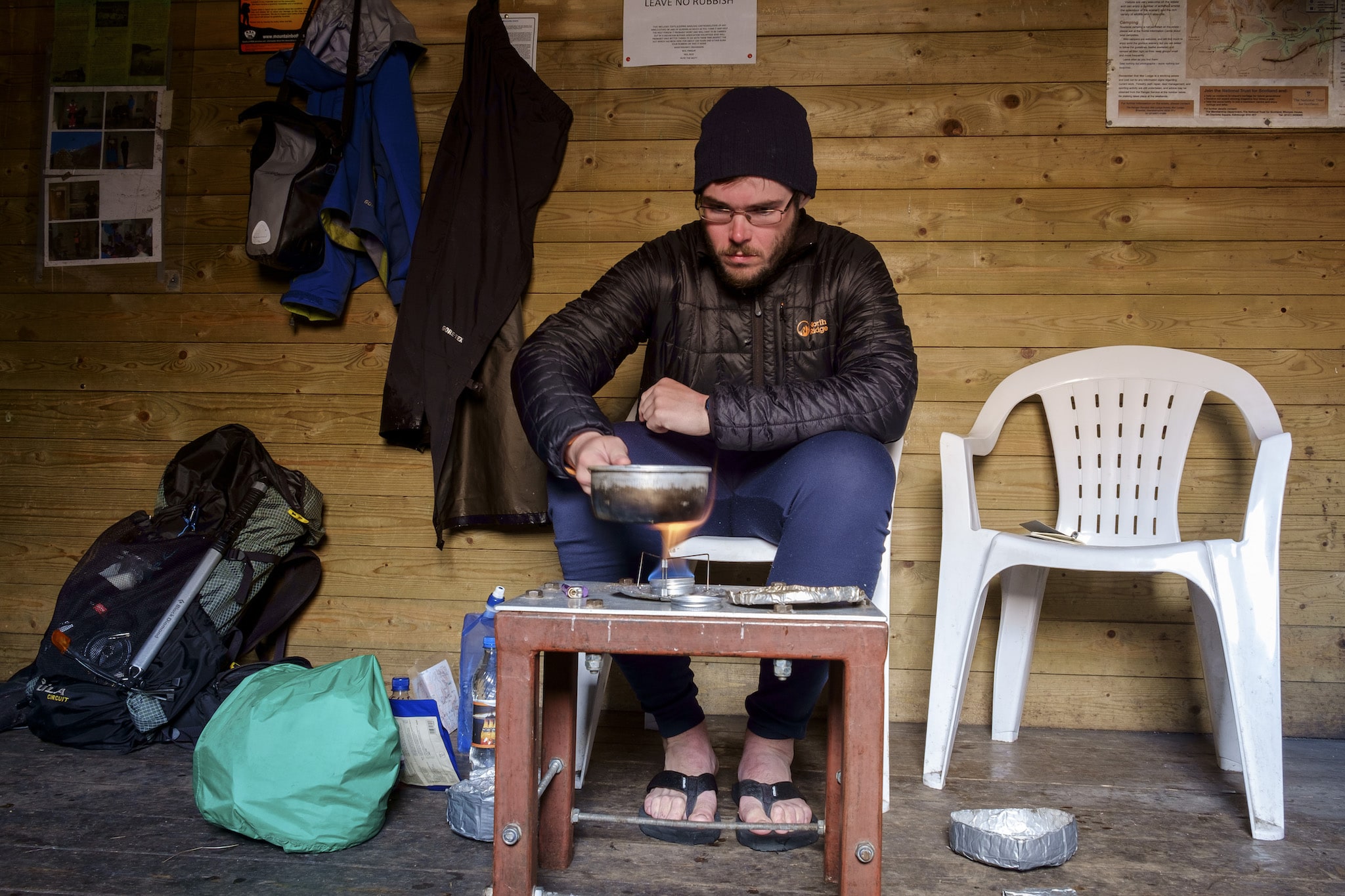
A lightweight insulated top is a versatile garment year-round, but comes into its own in spring and autumn
Lightweight clothing tactics
Leave things behind
This is the big one, and something everyone can do without spending a penny: go through your gear stash and consider which items you’ve been carrying that you don’t truly need. Here are some suggestions for clothing you could leave behind next time:
- Spare socks. In summer I only carry two pairs of socks, and alternate between them, washing the pair I wore the previous day and hanging them to dry on my pack. In the colder months I will add warm sleeping socks and an extra pair of walking socks (potentially two extra pairs in winter conditions).
- Spare pants. It may sound a bit grim, but with anti-odour technologies such as Polygiene a single set of underwear can take you further than you might think.
- Spare trousers and base layer. Quick-drying, lightweight clothing can reduce the need for spares in summer, although I always carry lightweight sleeping clothes for wearing in my sleeping bag – going to bed in wet clothes is an example of ‘stupid light’.
- Insulation. Very much down to the individual, but you probably don’t need as much insulation as you may have been carrying. In summer you probably don’t need a softshell jacket, fleece, and insulated jacket.
When you’ve whittled away at the spares you’ve been carrying, it’s time to consider the core items that remain.
The layering system for lightweight backpacking
Layering is all about creating a system that can be adapted to suit a wide range of conditions.
Traditionally it included the following:
- Base layer. In warm weather this may be enough by itself.
- Active insulation. Traditionally fleece. Add this when the temperature drops. It insulates while managing moisture and preventing you from overheating.
- Waterproof and windproof outer layer. Keeps off the cold wind and rain. In warmer wet conditions it’s often worn directly over the base layer.
- Stationary insulation. Add this when you stop for more than a few minutes in cold conditions. Much warmer but traditionally less good at managing moisture; often too warm for active use in anything but the coldest conditions.
These remain at the core of the layering system, although nowadays the lines are a bit blurred and there are other items that can add value to our setup.
For the lightweight backpacker in typical summer three-season conditions, here is an updated model for the layering system, featuring a few examples from our review archives. This setup won’t necessarily be the best for everyone – it doesn’t include softshell, for example, which can be useful in some circumstances – but it is a good starting point.
Base layer
- Wicking merino or synthetic tops are great for wet conditions, as they manage moisture well; they’re also good for cooler weather. Long sleeves are better as they offer more protection but can still be rolled up. Example: Sprayway Roola.
- If hot conditions are expected, a light and well-ventilated hiking shirt may be a better choice. Example: Craghoppers Nosilife Adventure.
Active insulation
- Fleece remains a solid choice for cold and wet conditions due to its superior moisture-management capabilities.
- Look for thinner, lighter garments – these are more versatile when layered. A good example is the Montane Allez Micro pull-on, an ultralight micro-grid fleece top that’s great for cool summer conditions and weighs around 200g. A typical 100-weight microfleece top weighs around 300g.
- Avoid thick, 200-weight fleeces. Most people find them too warm for active use and their warmth-to-weight ratio is poor.
- In colder conditions, highly breathable synthetic and down insulated jackets are appearing on the market that straddle the line between active and stationary insulation. In certain scenarios these pieces can prevent the need to carry two insulated garments when one will do both jobs. An example: the Berghaus Aonach Jacket.
- In warmer, drier conditions you may not need any active insulation at all, but experience is needed to make this call – if in doubt, pack it anyway.
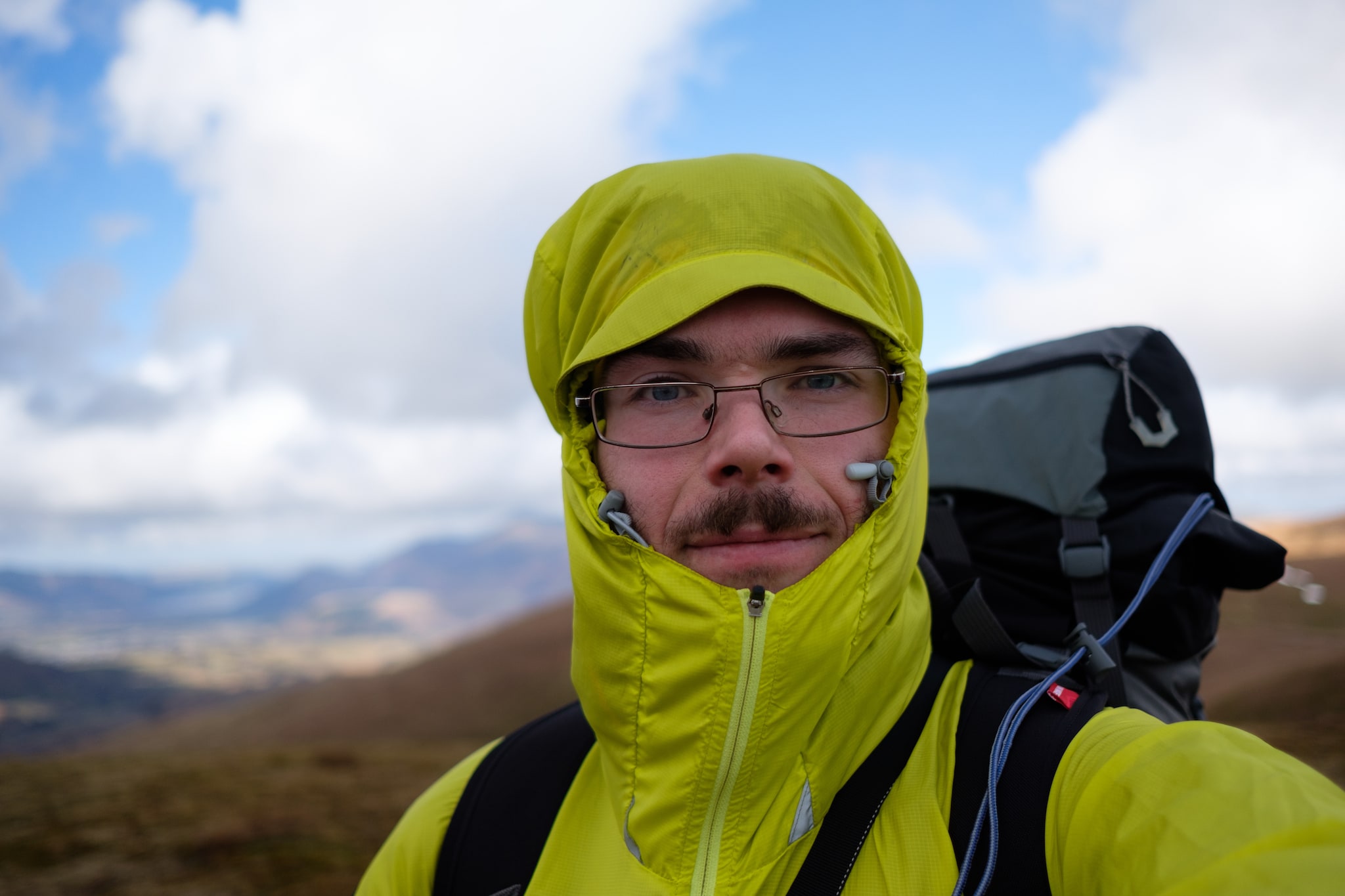
A good windproof offers maximum versatility
Windproof jacket
- An ultralight windproof top is one of the most versatile items you can carry in summer conditions.
- Typically weighing around 100g, it offers protection against chilly winds while being an order of magnitude more breathable than a waterproof. This makes it ideal to wear when you’re working hard climbing steep terrain yet still need a light layer to keep off the cool breeze.
- Windproof tops are also great for repelling light drizzle.
- An example: Mountain Equipment Aerofoil Jacket.
Waterproof jacket
- Lightweight jackets suitable for backpacking range in weight from around 100g (the Berghaus Hyper 100, a high-tech ‘just-in-case’ layer), but jackets ideal for regular UK use tend to sit in roughly the 2-400g range.
- Sub-200g jackets have their place for ultralight trips in good weather, or to destinations where extended rain is not expected, such as California or the Pyrenees. However, they will not be as durable as heavier jackets, and in some cases may be less breathable.
- A good all-rounder will be waterproof and highly breathable, have an adjustable hood that moves with the head and has a good peak, and ventilation options (e.g. pit zips or vent pockets).
- An example: the Montane Minimus Stretch Jacket.
Stationary insulation
- A puffy jacket is a useful item to have if wild camping high, even in summer. It gets cold at night and you’ll want a warm layer to wear around camp. In autumn or winter a puffy becomes vital, arguably even for day walks, when it comes into its own during brief food or rest stops.
- Very light down jackets weighing 2-300g are available. These are fine for lightweight backpacking in summer but most people won’t find them warm enough for winter. Winter jackets tend to start from roughly 500g.
- Traditionally, synthetic was best for wet conditions, but modern hydrophobic down has closed the gap.
- Down is warmer for its weight and has a longer life, but is also more expensive and can be more difficult to clean.
- Look for a durable and water-resistant outer layer (fully waterproof puffy jackets are uncommon).
- Summer example: PHD Waferlite.
- Winter example: Berghaus Extrem Ramche 2.0.
Legwear
- In the British mountains, walking trousers are still the best choice due to the risk of ticks and the fact that the weather can change rapidly.
- Look for thin and breathable material, ideally with some stretch, and good freedom of movement. Paler colours are less hot to wear – and it’s easer to spot ticks on them too.
- The Montane Terra Pants are a classic example.
- Shorts have their place. I have found running shorts to be excellent in hotter environments with more stable weather such as the Alps and the Pyrenees. However, you do get through more sunscreen, and your legs can get scratched by vegetation.
- Waterproof overtrousers are necessary for most UK conditions. Look for waist adjustment and side zips to allow you to pull them over shoes, but the fewer additional features the better (they tend to add weight!). Lightweight overtrousers suitable for regular use tend to sit in the 2-400g range.
- An example: Berghaus Light Hike Hydroshell.
- Much lighter (sub-200g) overtrousers are available, but they sometimes sacrifice durability, breathability, or fit; like very light jackets, they’re more suitable for less severe weather or occasional use.
- A wildcard option is the rain kilt, windproof trousers and running shorts combo. I recently used this system in the Maritime Alps, a hot environment with short-lived, predictable rainstorms, and it excelled there. I put the windproof trousers on during chilly mornings, and added the rain kilt during a heavy thunderstorm. Overall weight was less than a good pair of waterproof trousers and it was arguably more versatile for the conditions, although protection would have been lower in the event of serious wind, rain and cold. I’d use this setup again in a similar environment but I wouldn’t leave my waterproof overtrousers behind in the UK!
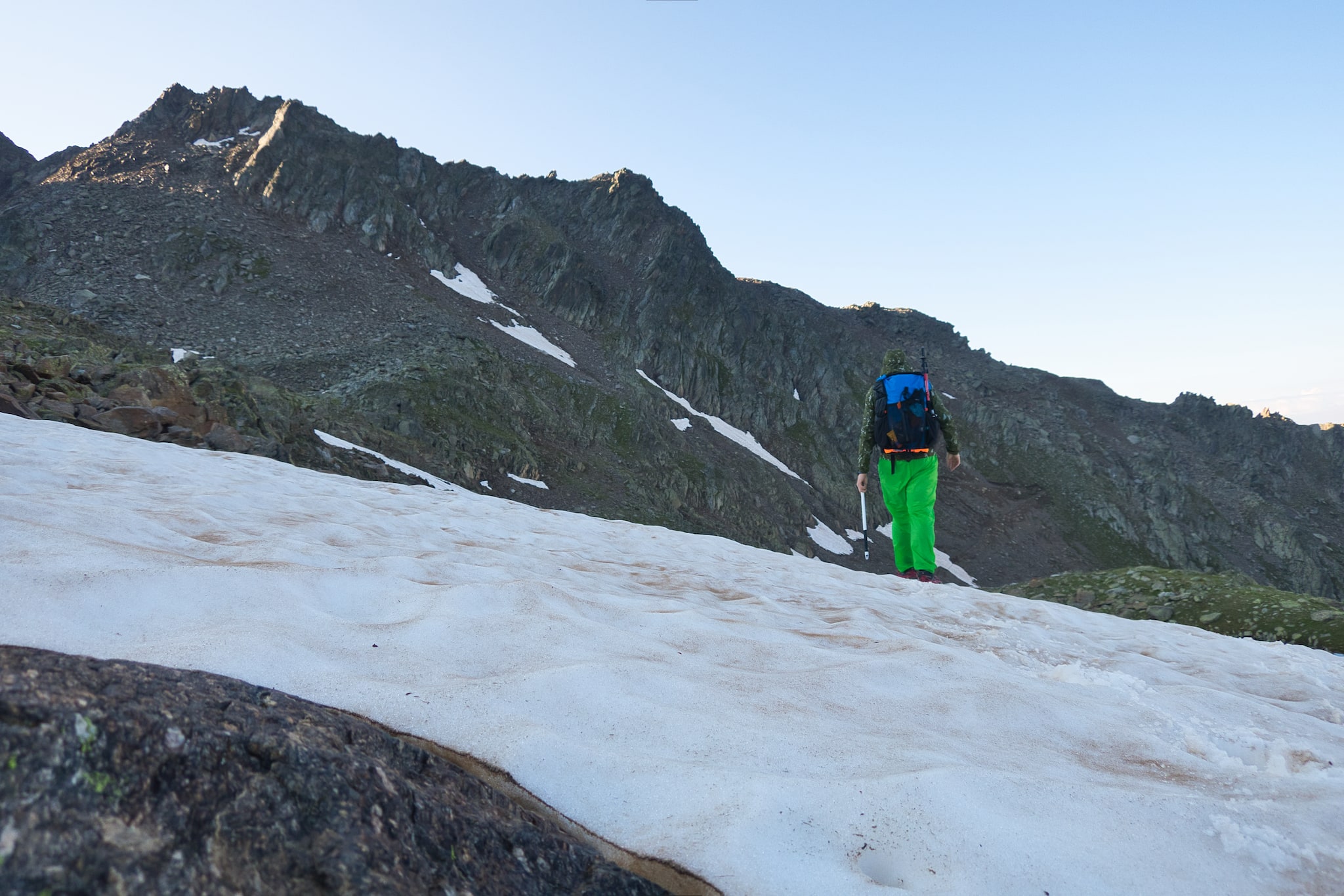
The author in the Mercantour National Park, sporting windproof trousers and windproof jacket – a capable combination for chilly Alpine starts
Hats and gloves
- In summer, most people will want to carry a sun hat and a warm hat (a simple fleece beanie is usually the best and lightest option for the latter).
- A sun hat should be lightweight and light in colour, provide good protection, be secure in high winds, and fold up for storage in your pack. An example: Sunday Afternoons Sun Guide Cap.
- In summer, simple lightweight fleece gloves may be sufficient – or consider softshell gloves for a little more protection. Most people won’t need multiple pairs of gloves in summer conditions.
- In winter it’s a different story, and you’ll want several pairs from liner gloves to very warm mitts.
Sleeping clothes
- To help keep my sleeping bag clean, I wear a lightweight pair of long johns and an old long-sleeved base layer to bed.
- Combined weight is around 300g – worth carrying to avoid my down bag absorbing grime and oils from my body, which could compromise its performance.
- It’s also important to have dry clothes to change into at the end of your hill day. The first thing I do after setting up camp is to change into my sleeping clothes (if necessary adding insulation etc. on top).

